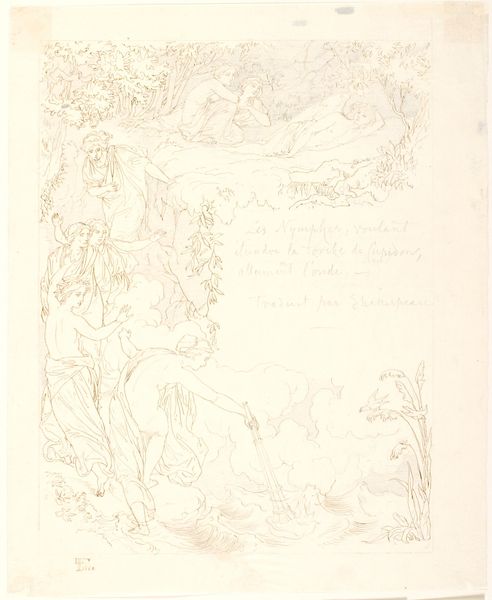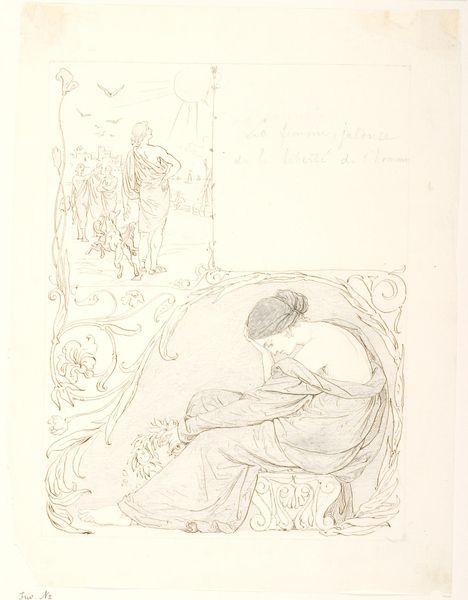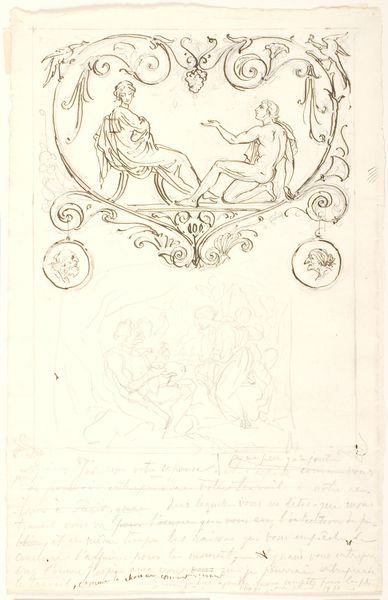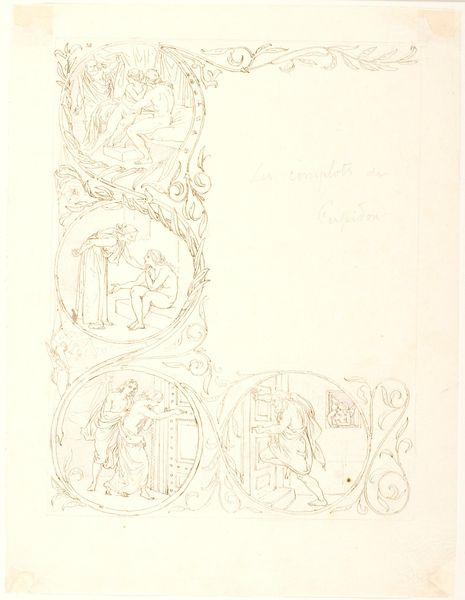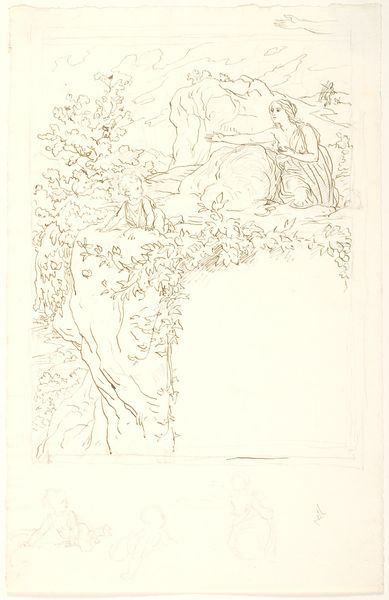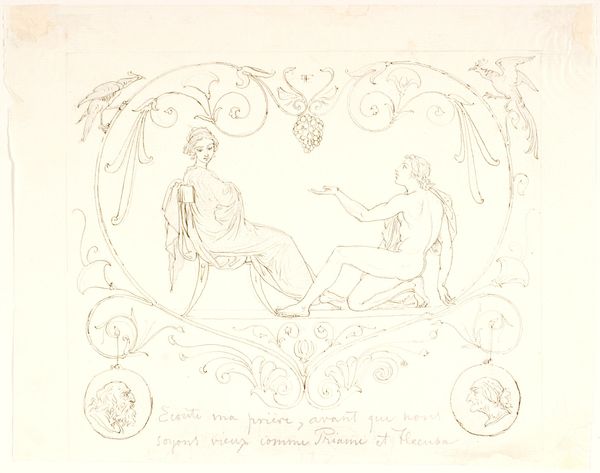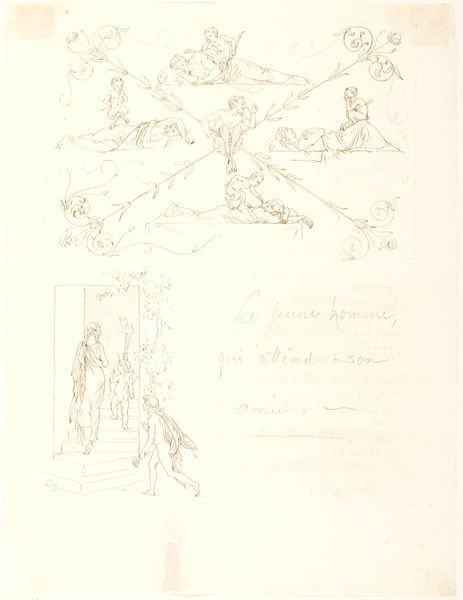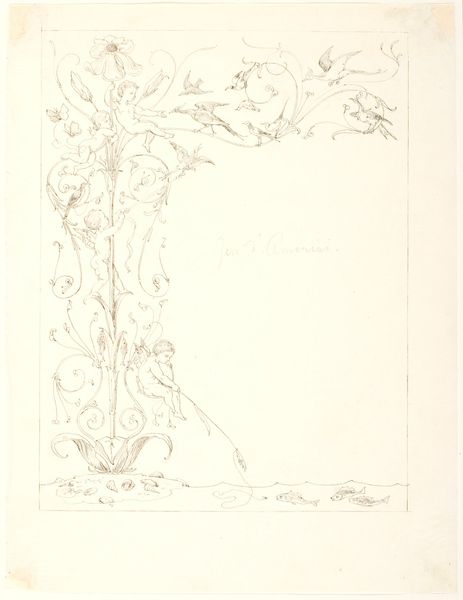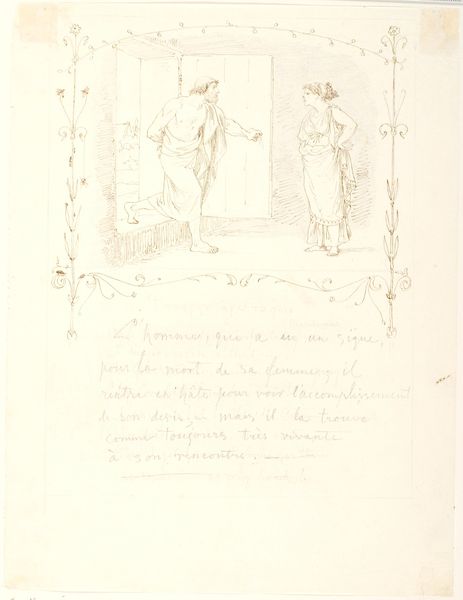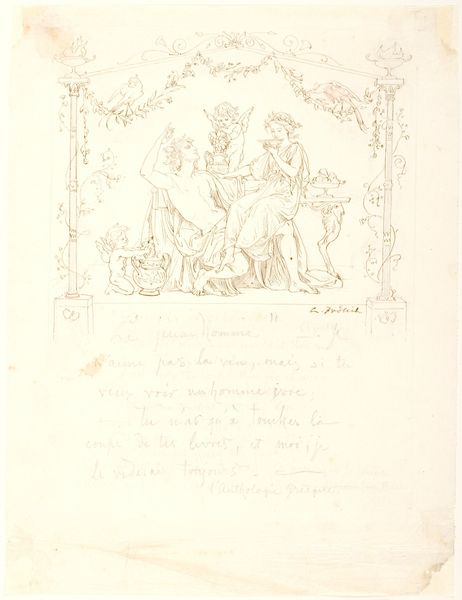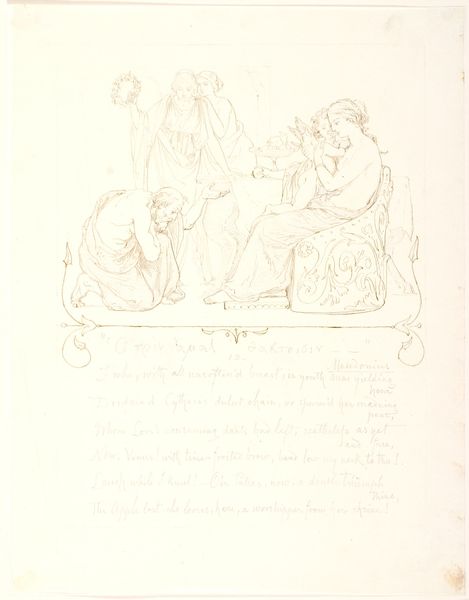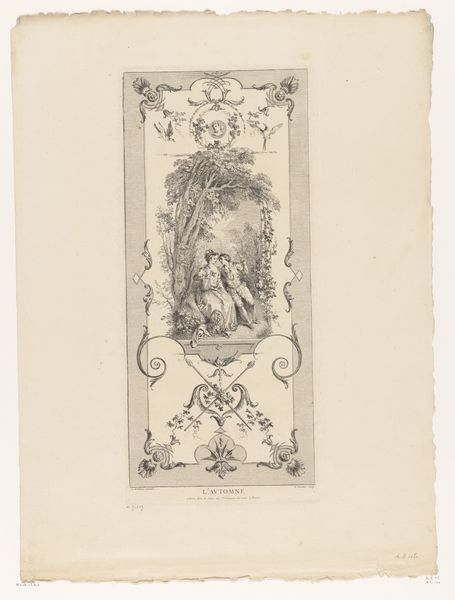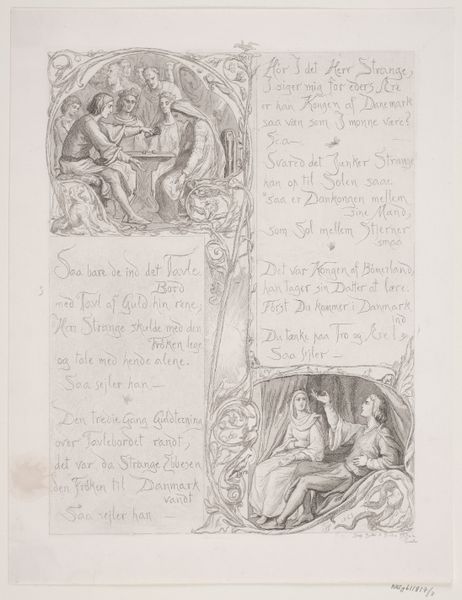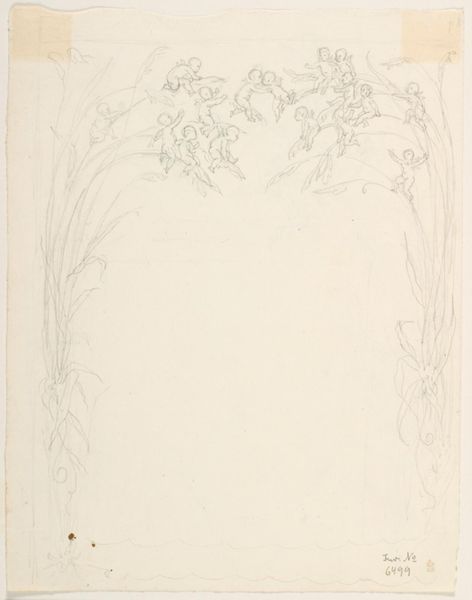
Ung læsende pige. Eros med papyrosrullen. En fugl flyver med papyrosrullen over havet. Ung skrivende mand 1860
0:00
0:00
drawing, ink, pen
#
drawing
#
ink drawing
#
allegory
#
pen sketch
#
classical-realism
#
ink
#
pen
Dimensions: 273 mm (height) x 207 mm (width) (bladmaal)
Editor: Here we have Lorenz Frølich's "Ung laesende pige. Eros med papyrosrullen. En fugl flyver med papyrosrullen over havet. Ung skrivende mand," an ink and pen drawing from 1860. The linear quality of the image, with the figures seemingly floating on the page, gives it an ethereal feel. What do you see in this piece? Curator: Well, I'm immediately drawn to the materiality of it – the ink, the pen, and the paper. These readily available materials allowed Frølich to create this relatively quick sketch. How might the accessibility of these materials democratize artistic creation? It suggests a directness and an intimacy, a kind of personal labor visualized through readily accessible means. We could think of the "high art" displayed here alongside everyday skills of penmanship. Editor: Democratization of art through cheap materials and tools is fascinating, and something I hadn't considered for art from this time period. But could it also represent, perhaps, the artist's process itself? A preliminary study, maybe? Curator: Absolutely! The sketch-like quality speaks volumes. This might be about the exploration of ideas through a specific process using relatively little investment or specialized knowledge, an accessible artform within easy reach. Consider how the ink’s viscosity influences the lines, and how the paper accepts or resists the ink. These are physical properties directly informing the art. Also the classical setting might allude to traditional education, making it about intellectual craftsmanship and labour too. Editor: So it's about considering art-making less as an inspiration and more as skillful labour and a product of its context and materials? Curator: Precisely. It makes us reconsider the artist less as a divine figure, and more of as someone engaged with everyday materiality. In doing so, how are established boundaries upset when regarding labour? Editor: I learned to look beyond just the image and also consider production, labour, and material implications. Thanks. Curator: And I appreciate you highlighting the tension between 'sketch' and finished product. That’s a relationship defined by artistic labor, context and time.
Comments
No comments
Be the first to comment and join the conversation on the ultimate creative platform.
